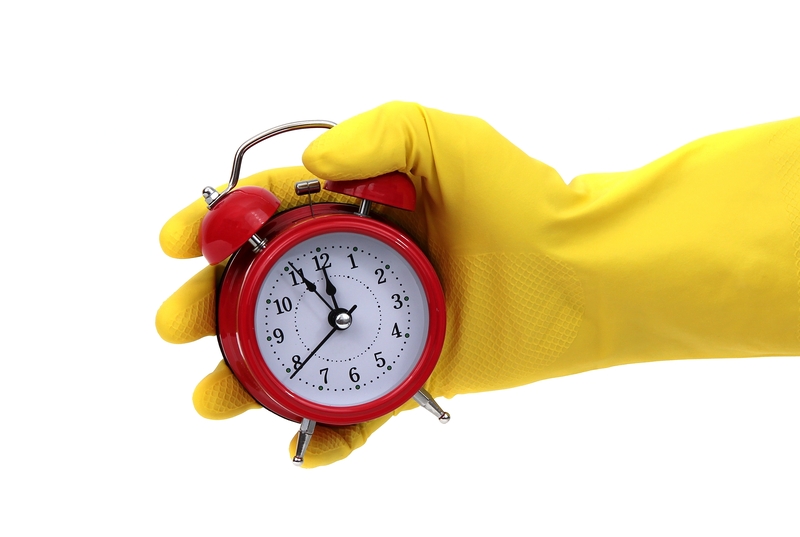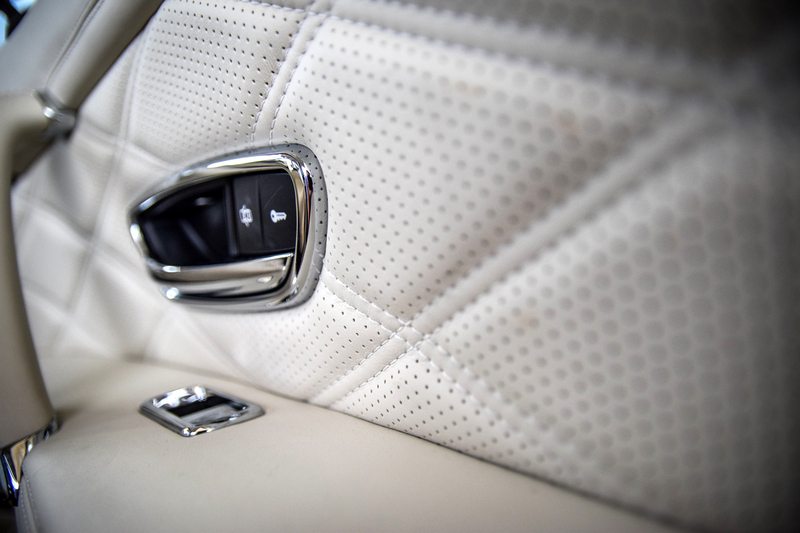Extend the life of your velvet curtains with safe washing
Posted on 02/06/2025
Extend the Life of Your Velvet Curtains with Safe Washing
Velvet curtains add luxury, depth, and a sense of sophistication to any room. However, due to their delicate composition, keeping them clean while maintaining their elegant appearance requires special care. If you want your velvet drapes to look beautiful for years to come, learning the correct washing methods is essential. In this comprehensive guide, we'll show you how to extend the life of your velvet curtains with safe washing. Discover best practices, expert tips, and answers to common questions about cleaning and caring for velvet window treatments.

Understanding the Nature of Velvet Curtains
Velvet is a plush, soft fabric with a distinctive pile that can be made from silk, cotton, polyester, or a blend of fibers. Its beautiful sheen and tactile appeal come from the way its fibers stand up from the base, catching and reflecting light. This luxurious fabric is used frequently for curtains, drapes, and upholstery. But precisely because velvet is so unique, it can be extra sensitive to moisture, heat, and friction - all factors that arise during cleaning.
- Velvet's pile can flatten, distort, or lose luster if mishandled during washing.
- Some types of velvet can be safely machine-washed, while others require only dry cleaning or gentle hand-washing.
- Dyes and fibers in velvet are prone to color bleeding, water spots, and shrinking if exposed to the wrong cleaning agents or methods.
The key to prolonging your velvet curtains' lifespan is using the safest, most suitable washing technique for the specific kind of velvet you own.
Why Is Safe Washing Vital for Velvet Curtains?
Safe washing practices help keep velvet curtains looking brand new by:
- Preserving the soft, plush pile and preventing matting or crushing.
- Maintaining vibrant color and sheen without fading.
- Preventing shrinkage, tears, or fabric warping.
- Eliminating dust, allergens, and odors without causing water spots or damage.
Neglecting safe washing can prematurely age your curtains, leading to costly replacements or unsightly window treatments. By swiftly addressing dust and stains--and knowing how to clean velvet safely--you will maximize the life and beauty of your investment.
Types of Velvet and Their Washing Requirements
Before washing, always identify the type of velvet your curtains are made from. The washing instructions for velvet can vary greatly depending on the fiber and construction:
- Silk Velvet: Extremely delicate and almost always requires professional dry cleaning.
- Cotton Velvet: More robust than silk, but still may need dry cleaning. Some cotton velvets can be hand-washed with care.
- Synthetic Velvet (Polyester, Nylon): Usually more durable and can often be safely washed at home, though gentle methods are still best.
- Crushed or Embossed Velvet: Special surface treatments make these types particularly vulnerable to damage from water and heat.
Tip: Always check the care label sewn into your velvet curtains. When in doubt, consult a professional cleaner experienced with velvet fabrics.
General Preparation Before Cleaning Velvet Curtains
1. Read the Care Label Carefully
Look for washing symbols and instructions. If the label says "Dry Clean Only," resist the urge to wash at home. For machine or hand washable velvet, proceed with caution.
2. Test for Colorfastness
Before proceeding with any washing method, check if the dye might bleed:
- Dab an inconspicuous area with a damp white cloth.
- If color transfers to the cloth, do not wash. Opt for dry cleaning instead.
3. Remove Dust and Loose Dirt
Dust particles can become entrenched during washing, leading to dullness:
- Lay your curtains flat or hang them and gently use a vacuum with a soft brush attachment.
- Alternatively, shake outside or use a lint roller for lighter curtains.
Safe Washing Methods for Velvet Curtains
When Is Machine Washing Velvet Curtains Safe?
Only machine-wash velvet curtains if the care label specifically states it's allowed. Follow these best practices:
- Choose the gentlest cycle--typically "delicate" or "hand wash."
- Use cold water to prevent shrinking and fading.
- Wash curtains inside out to protect the pile.
- Only use mild, bleach-free detergent designed for delicates.
- Wash one panel at a time to avoid overcrowding the drum.
- Never use fabric softener, as it can coat the velvet's fibers and make it feel stiff.
- Avoid spinning at high speed--this can crush the pile.
Immediately after the cycle, remove the curtains to prevent creasing and distortion.
Hand Washing Velvet Curtains Safely
Hand-washing is often the safest way to clean your velvet window drapes, especially for those without "machine washable" tags.
- Fill a clean tub or basin with cool or lukewarm water.
- Add a small amount of gentle liquid detergent.
- Submerge the curtain and gently swish it around for just a few minutes. Do not rub, wring, or twist the fabric.
- Drain soapy water and rinse several times in cool water until all detergent is removed.
- To remove excess water, press the curtain gently between clean towels. Never wring out velvet!
Note: For larger or extra-thick velvet curtains, hand washing may not be practical; professional cleaning may be the only safe option.
Spot Cleaning Velvet Curtains
For minor stains or spills, spot clean velvet safely:
- Blot (don't rub) the stain with a soft, absorbent white cloth.
- Mix a few drops of mild detergent with cool water. Dampen a clean cloth with the solution and blot the stain gently.
- Use another damp cloth with just water to remove residual soap.
- Allow to air dry, then fluff the pile with your hand or a soft brush once dry.
Drying Velvet Curtains Properly
Never Use a Dryer
Do not tumble dry velvet curtains--the heat, friction, and tumbling can irreversibly damage the pile. Instead:
- Lay curtains flat on a clean, dry towel, then roll towel up to absorb excess moisture.
- Unroll, reshape curtains to their original form, and lay flat to dry (on another clean towel or drying rack).
- Alternatively, hang curtains by clips or rings along a sturdy rod, ensuring the fabric hangs smoothly without folds.
- Keep out of direct sunlight to avoid fading.
Restoring Velvet's Pile After Washing
If velvet looks crushed after washing or drying, revive its lush appearance with a gentle touch:
- Once fully dry, gently brush with a soft-bristled garment brush or a purpose-made velvet brush in the direction of the nap.
- Use a clothes steamer (not an iron) to lift the pile and remove wrinkles. Hold the steamer a few inches away to lightly steam the surface; do not soak the fabric.
Extra Tip: If you don't have a steamer, you can try hanging the curtains in a steamy bathroom to relax the fibers.
Long-Term Care for Your Velvet Curtains
Routine Maintenance
To extend the lifespan of your velvet curtains between washes:
- Vacuum regularly with a soft attachment to keep dust and debris at bay.
- Avoid direct sunlight on curtains to prevent fading.
- Rotate your curtains seasonally if one side receives more sun than the other.
- Spot-clean as soon as a stain or spill occurs to prevent permanent marks.
- Maintain good ventilation to prevent odor and moisture issues.
When to Opt for Professional Cleaning
Some situations require the expertise of a professional cleaner:
- Heavily soiled or stained velvet curtains.
- Antique, silk, or hand-embellished velvet.
- Very large or lined drapes with interlinings.
- Uncertainty about the fiber content or correct washing method.
Professional cleaning may be the safest investment when in doubt--especially when you want to protect the elegance and integrity of your precious velvet window dressings.
Common Mistakes to Avoid When Washing Velvet Curtains
- Ignoring care labels: Always check for specific cleaning instructions before proceeding.
- Using hot water or harsh detergents: These can cause fading, shrinking, or permanent damage.
- Over-agitating the fabric: Velvet should be handled as little as possible during washing and drying.
- Wringing or twisting velvet to extract water: Doing so can ruin the pile and cause irreversible creases or texture loss.
- Tumble drying: Heat and friction will almost always damage velvet curtains.
- Ironing directly: If you must remove creases, always use steam and never let an iron touch the velvet directly.

FAQs: Safe Washing for Velvet Curtains
Q: Can I wash all velvet curtains at home?
A: No. Always read the care label. Some velvet curtains--especially those made of silk, or with intricate detailing or interlining--should never be washed at home and require professional dry cleaning.
Q: How often should I clean my velvet curtains?
A: For most homes, washing velvet curtains every 12-18 months is sufficient, unless they become heavily soiled or stained. Regular vacuuming and spot-cleaning extend intervals between washes.
Q: What detergent is best for safe washing of velvet curtains?
A: Choose a mild, bleach-free detergent designed for delicates. Avoid anything with optical brighteners or heavy scents.
Q: How do I fix flattened or shiny spots on velvet after washing?
A: Brushing with a soft-bristled garment brush and gently steaming can revive the pile. For persistent marks, professional cleaning may help.
Final Thoughts: Prolonging the Beauty of Your Velvet Curtains
With the right approach, safe washing of velvet curtains will not only keep them clean and free of odors or dust, but it will prolong their elegant look and feel for many years. Always prioritize gentle handling, check care labels, and opt for professional cleaning when needed. By investing a little time and care, you'll enjoy the timeless beauty and plushness only velvet can provide, making your investment last as long as possible.
Want more tips on extending the lifespan of luxury home textiles? Bookmark this guide and share it with fellow velvet lovers! Your curtains will thank you for the attention, and your decor will shine with enduring elegance.


